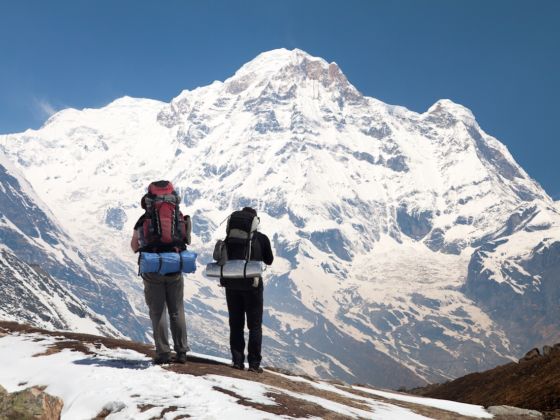HERE’S A LOOK inside my Annapurna Sanctuary trekking pack. The idea is to cover everything you need for a trekking adventure, as well as mentioning some things you’re probably better off leaving at home.
Total pack weight: 22 lbs.
Clothes
5 non-cotton shirts
